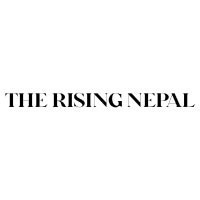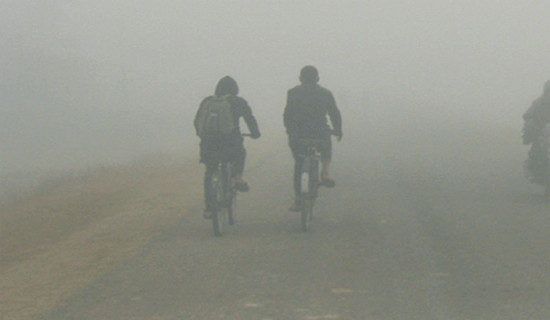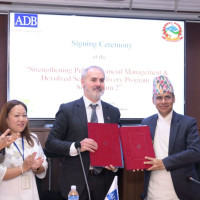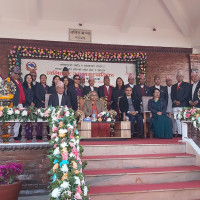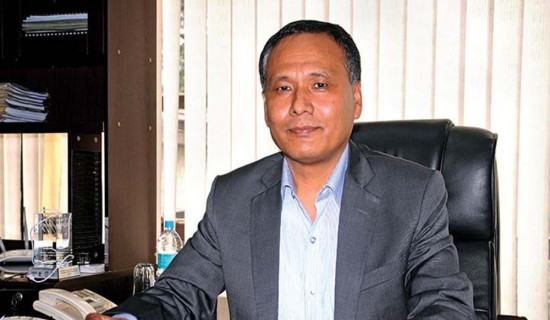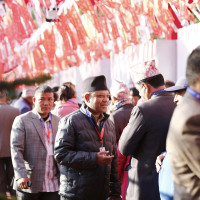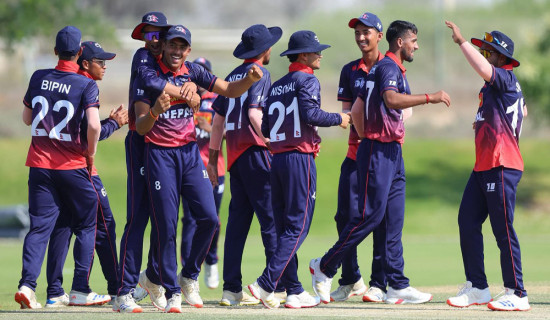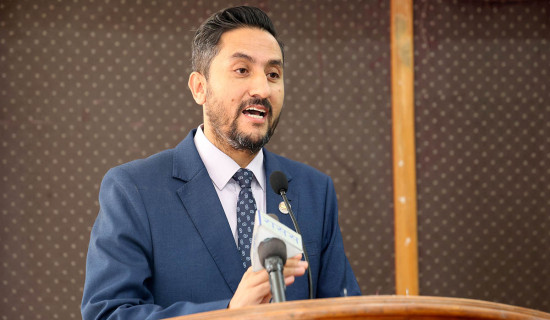- Wednesday, 17 December 2025
Approach To Ending TB Stigma
Tuberculosis (TB) is one of the serious public health challenges in Nepal. While there is a dominant focus on biomedicine, the social dimensions of TB are valuable. Yet they are often overlooked in policies and plans. Therefore, we need insightful ways to examine the social, historical and cultural determinants of TB to better understand how it is understood, experienced and interpreted in the everyday life of people within and across societies.
Notably, evidence suggests that there is still a high proportion of underdiagnosed and untreated people with TB, particularly among socio-culturally and economically marginalised populations. Many people still do not know that TB is preventable and curable. On the other hand, the ground reality is that TB-affected people still experience hardships, hopelessness, loneliness, and social discrimination as a result of TB stigma.
Stigma
In a broad sense, stigma refers to a social process where individuals are devalued, discredited, or labelled as undesirable due to a particular characteristic or condition, such as TB. Furthermore, discrimination is the unfair or unequal treatment of individuals or groups based on perceived or actual characteristics, such as having TB. In the policy domain, ending TB stigma is one of the priorities. Access to quality diagnosis, treatment, care and support at the health facilities has steadily improved over time. But issues around TB-related stigma are still in the shadows at the implementation level.
Moreover, their first-hand experience, knowledge, and practice are not fully appreciated yet. This way, we cannot enhance social accountability and ownership of the TB response. As a result, our goal of ending TB remains elusive. Participatory assessment of TB stigma provides new evidence and insights into how TB vulnerability, treatment availability, acceptability and quality of TB care are socially, culturally and historically shaped by stigma. Clearly, stigma contributes to the suffering from illness in various ways, and it may delay diagnosis and treatment, leading to prolonged transmission of infectious diseases, drug resistance, or complications that increase treatment costs.
Evidence suggests that stigma is experienced by people diagnosed with TB at different levels. First and foremost, anticipated stigma, self-stigma and enacted stigma are observed and experienced by the people living with TB. Of course, different layers of stigma in social hierarchies are observed by family members and caregivers as well as health care workers. More notably, structural stigma such as national laws, polices, and media reporting may harm or protect people living with TB and their families. This includes societal level conditions, cultural norms and institutional practices that constrain the opportunities, resources and well-being of stigmatised populations.
Unfortunately, there is limited evidence on different levels and dimensions of TB stigma because a comprehensive stigma assessment has not been conducted yet. We must recognise that protection and promotion of the human rights of people affected by TB is a legal, ethical and moral imperative, as well as an integral part of effective national TB response. Again, there are increasing voices for addressing socio-cultural barriers related to human rights and gender equity. Despite global commitment to making TB response rights-based, equitable, and stigma-free, there is slow progress in terms of keeping TB-affected communities at the heart of everything we do, and aiming to leave no one behind.
The Community, Rights and Gender (CRG) is an emerging innovative approach in the national strategic plan which draws attention of stakeholders to the critical need to promote equity, human rights and ethics. The approach is aligned with the international human rights framework, the essence of universal health coverage and health-related Sustainable Development Goal (SDGs), ensuring everyone has access to quality, affordable health services. There are critical areas where our policymakers must take action towards bold policies and systems in the federal context. Beyond the health system, coordination across social sectors is crucial to prevent and end TB.
While strengthening the implementation of social protection services for people affected by TB is at an early stage, achieving universal health coverage is more challenging. To some extent, local strategies aim to address the social determinants of TB. These are not sufficiently mainstreamed in local plans while tackling TB among vulnerable groups such as the poor, people living with HIV, migrants, and prisoners. Further, there are no solid strategic shifts in polices and interventions to end TB stigma. And we hear similar repeated stories and narratives dominating the policy discourse surrounding the TB response.
Socio-political context
In the changed socio-political context, can local governments, policy makers, health activists, media and people affected by TB think of new ways to end TB stigma? To sum up, a new paradigm is critical to better understand the meaning of TB stigma in the changed socio-political context and the role of social actors in the society in which we live. The anthropological approach would be helpful to explore, understand and analyse the dynamics of stigma people experience in their everyday life. To this end, the approach provides new insights into how TB stigma is created socially, culturally, and symbolically, and further institutionalised in society.
We also notice that there are differences in the motives and intentions of ending TB stigma. Indeed, it is crucial to understand how the affected people adjust, adapt and transform their social world where they live. There is a set of values, beliefs and attitudes in our society that no one questions; rather, one accepts them the way they are. We must challenge this reality and break the barriers to ensure no one is left behind.
(Bhandari is a health policy analyst interested in anthropology.)


